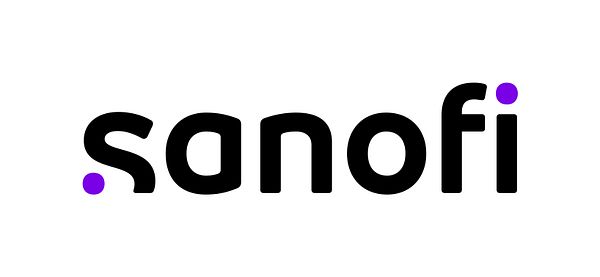Pressmeddelande -
TELITHROMYCIN AGAINST STREPTOCOCCUS PNEUMONIAE SHOWN SUPERIOR
MICROBIOLOGICAL ACTIVITY OF TELITHROMYCIN AGAINST STREPTOCOCCUS PNEUMONIAE SHOWN SUPERIOR TO OTHER STANDARD FIRST LINE ANTIBIOTICS OVER 4-YEAR PERIOD
New data demonstrates that in vitro activity of Ketek (telithromycin) remained consistently high on S. pneumoniae with at least 99.8% of the isolates being susceptible
Paris, 20 September 2005 Data presented today at the 15th Annual International Congress of the European Respiratory Society (ERS) in Copenhagen, Denmark from the 4th year of the Prospective Resistance Organism Tracking and Epidemiology for the Ketolide Telithromycin (PROTEKT) study showed that the in vitro activity of telithromycin (marketed as Ketek) against respiratory tract infection (RTI) pathogens is superior and consistently high compared to that of penicillin and macrolides. The susceptibility rate ranged between 99.8% and 100% and the minimum inhibitory concentration (MIC90) for telithromycin (0. 06 mg/L) was lower than that for all comparators and showed no increase throughout the four-year period.
The potent in vitro activity of telithromycin supports its use as a first line treatment against commonly found resistant strains of RTI pathogens like S. pneumoniae. The study therefore has important implications for decision making in everyday clinical practice, said Professor Francesco Blasi from the Institute of Respiratory Diseases, University of Milan, Italy. This study has been analysing the activity of a range of antibacterial agents against resistant strains of pathogens and clearly shows the sustained in vitro activity of telithromycin over a four-year period.
Ketek was specifically developed to cover the common organisms involved in RTIs, including multi-drug resistant S. pneumoniae one of the most frequently identified cause in community-acquired RTIs. Increasing bacterial resistance in S. pneumoniae is a global problem and is threatening the effectiveness of available treatment options.1 Because of its targeted anti-bacterial spectrum Ketek has limited impact against host bacteria that are not involved in outpatient RTIs. This helps to minimize the development of collateral resistance in damage on non-respiratory pathogens that has been observed with less selective agents.
About the study
The PROTEKT study is an ongoing longitudinal, global multi-centre surveillance study of the activity of antibiotics against respiratory tract infections. The study, started in 1999, was rolled-out across 116 centres in 38 countries worldwide. The main objectives of the study were to observe inter-country variation in antibiotic resistance and other activity patterns, analyse the activity of a range of antibacterial agents against common bacterial respiratory tract pathogens and to track the susceptibility rates of the pathogens to telithromycin and other commonly-used antibiotics. The study highlighted that resistance of S. pneumoniae to betalactams and macrolides had reached worrying rates in many countries of the world, particularly France, Spain and Italy for the European region.
A total of 3722 isolates of S. pneumoniae were collected from patients with a clinical diagnosis of acute sinusitis (AS), acute exacerbation of chronic bronchitis (AECB) or community-acquired pneumonia (CAP) between 1999 and 2003. Susceptibilities and MICs were determined according to CLSI methodology and interpretive criteria.
(see attahed file)
AS (n=458)
AECB (n=880)
CAP (n=2384)
Antibacterial
S (%)
MIC90 (mg/L)
S (%)
MIC90 (mg/L)
S (%)
MIC90 (mg/L)
Penicillin
81.9
0.25
79.2
2
73.0
2
Amoxicillinclavulanate
97.6
0.12
96.3
2
94.4
2
Cefuroxime
89.5
0.5
85.0
4
79.2
8
Azithromycin
73.1
≥128
72.7
≥128
75.3
≥128
Clarithromycin
73.4
≥64
72.6
≥64
75.3
≥64
Telithromycin
100
0.06
99.8
0.06
99.8
0.06
Overall, the susceptibility rate for telithromycin was significantly higher (99.8%) compared to an average of 75% for penicillin and 73% for macrolides. Moreover, for each condition, the MIC90 values for telithromycin were lower than those for all comparator agents and remained constant for the period of the study.
About Ketek
Ketek, the first in a new class of antibiotics known as the ketolides, was specifically designed to treat community-acquired respiratory tract infections and is indicated for the treatment of acute exacerbation of chronic bronchitis; acute bacterial sinusitis; and mild to moderate CAP, including those infections caused by multi-drug resistant S. pneumoniae, in patients 18 and older.
Ketek works differently than other antibiotics by binding strongly to two sites on the bacterial ribosome, stopping protein production and eradicating the targeted bacteria. This strong dual binding helps provide in vitro coverage against antibiotic-resistant strains of S. pneumoniae. This spectrum of activity provides tailored coverage of common respiratory pathogens, while minimising the impact on non-respiratory bacteria.
About sanofi-aventis
Sanofi-aventis is the worlds 3rd largest pharmaceutical company, ranking number one in Europe. Backed by a world-class R&D organisation, sanofi-aventis is developing leading positions in seven major therapeutic areas: cardiovascular disease, thrombosis, oncology, metabolic diseases, central nervous system, internal medicine, and vaccines. Sanofi-aventis is listed in Paris (EURONEXT: SAN) and in New York (NYSE: SNY).
1 Felmingham D, et al. J Antimicrob Chemother 2002;50(Suppl. S1):2537.


